TWM Blog

QQE Indicator Mistakes Beginners Should Avoid in 2025 — A Pro’s Guide by TWM
Introduction
Even the best trading tools can deliver poor results if used the wrong way. The QQE Indicator (Quantitative Qualitative Estimation) is designed to help traders measure momentum and volatility with precision — but small setup errors or misread signals can cost you profitable trades.
The QQE Indicator setup inside TWM’s desktop trading software helps traders identify true momentum shifts, making it a vital part of any QQE trading strategy. When used properly, it transforms how you read price action across Forex, Crypto, and Stock markets.
Inside TWM’s professional trading platform, the QQE extension integrates directly with real-time charting, automated systems, and volatility analysis tools. Understanding how to avoid common QQE mistakes is the difference between guessing and trading with data-driven confidence.
🧩 1. Misreading the QQE Crossover Signals
Many beginners treat QQE crossovers like ordinary RSI signals. However, QQE uses a dual-line system — a Fast Line and a Volatility-Adjusted Slow Line. When the Fast Line crosses above, it signals momentum strength; when it falls below, it warns of weakness.
👉 How to fix it:
Use TWM’s chart zoom and multi-timeframe view to confirm crossovers on both short and longer timeframes. This filters out false entries and keeps your QQE Indicator strategy aligned with the broader trend direction.
⚙️ 2. Ignoring Volatility Adjustment
The power of the Quantitative Qualitative Estimation system lies in its volatility tracking. If you skip ATR-based settings or don’t calibrate the QQE bandwidth, the indicator can lag or react too fast.
👉 Pro Tip:
Use TWM’s built-in parameter panel to fine-tune your ATR factor in real time. Small adjustments (for example, 4.0 → 4.5) can make your QQE extension inside TWM more responsive to volatile Forex or Crypto conditions.
When calibrated correctly, the QQE extension becomes one of the most precise volatility-tracking tools available, giving traders cleaner, data-backed entries.
📉 3. Over-Optimizing Settings
Some traders tweak the QQE Indicator settings after every trade loss — a classic mistake. Constant optimization creates inconsistent signals and removes the statistical value of the indicator.
👉 Instead:
Pick one configuration that works best for your market style — day trading, swing trading, or momentum scalping — and test it over multiple sessions using TWM’s built-in backtesting tool.
🔍 4. Forgetting to Use QQE with Support and Resistance
QQE alone shows trend strength but not context. When you ignore support and resistance levels, you risk entering late or missing major reversals.
👉 Fix:
Combine your QQE trading strategy with TWM’s chart-marking tools to highlight zones of confluence. This turns the QQE extension into a precision confirmation tool instead of a stand-alone signal.
🧠 5. Not Analyzing Divergences
One of the most underrated features of the QQE Indicator is its ability to show momentum divergence before a trend change. Beginners often ignore this clue because they focus only on line crossovers.
👉 Fix:
Within TWM, enable the Divergence Overlay in your indicator panel. It helps detect when price and QQE momentum disagree — a powerful early-warning signal for reversals.
🧭 Connecting Your QQE Setup to Other TWM Extensions
The beauty of TWM is integration. You can pair the QQE extension inside TWM with others like Shadow Diver, Range Levels, or Tube Fusion to test combined strategies. Each extension is built for the same desktop environment — meaning faster data sync, stronger signal accuracy, and no browser lag.
Tip: Start with the QQE Indicator to understand volatility behavior, then add extensions gradually for advanced automation.
💡 Why Learning from These Mistakes Matters
The goal of the QQE Indicator is not to predict every price move — it’s to help you read momentum and volatility more clearly. Avoiding these beginner mistakes means you’ll spend less time reacting and more time executing smarter decisions.
When used inside TWM’s professional desktop software, the QQE framework delivers its true potential — fast execution, custom charting, and a distraction-free environment for strategy testing.
If you’re still new to this system, start by reading our earlier post “How to Apply the QQE Indicator Across Forex, Crypto, and Stock Markets for Smarter Trading” to see practical use cases and setups for live markets.
❓ FAQs — QQE Indicator and TWM
Q1. Can I fix QQE Indicator lag in TWM?
Yes. Adjust your ATR multiplier in TWM’s settings to fine-tune signal responsiveness based on market volatility.
Q2. What’s the best QQE Indicator setup for beginners?
Start with the default 14-period RSI and ATR factor of 4.236 — then test in TWM’s simulation mode to find what fits your market style.
Q3. Can I use QQE in multiple markets at once?
Yes. TWM’s multi-chart workspace lets you analyze Forex, Crypto, and Stocks simultaneously using the same QQE extension instance.
Q4. Does QQE work with automated trading systems?
Absolutely. In TWM, you can pair the QQE extension with automation features for signal-based entries and exits.
Q5. Where can I learn more about TWM extensions?
Visit the TWM Wiki to explore other extensions like Shadow Diver and Range Levels for advanced strategy development.
🏁 Final Thoughts
Avoiding basic QQE mistakes is the first step to building confidence and consistency. Once you’ve mastered the right setup, TWM’s desktop software lets you turn data into strategy — all from one secure, downloadable platform.
👉 Start testing your QQE Indicator setup today on TWM. Download the software, connect your charts, and practice using real-time data — without browser limits or latency.